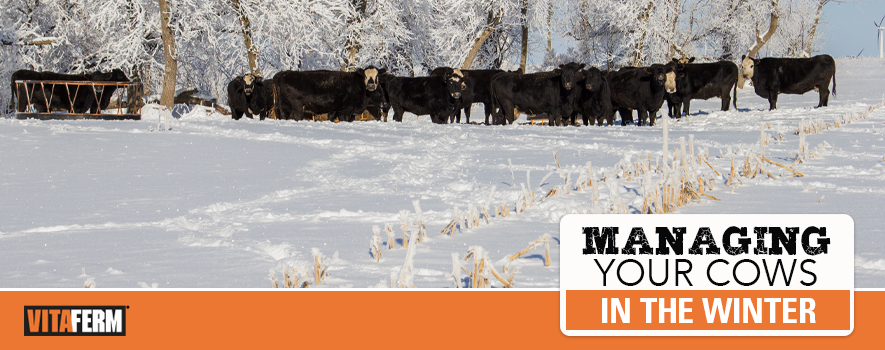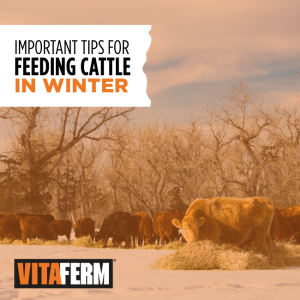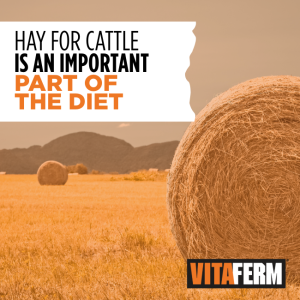The changing of the seasons is inevitable. That’s true whether you’re running Angus cows in North Dakota or Hereford and black baldie cows in south central Mississippi. However, when you’re a cattle producer whose livelihood depends on those mama cows, the changing seasons mean making a few adaptations to cow nutrition and care to make sure your herd continues to thrive each day of the year.
Mother Nature is Moody in the South
There’s no doubt that colder temperatures are a major part of what makes wintertime so challenging when it comes to taking care of livestock. And, it isn’t just the cold; it is the temperature extremes and the unexpected shifts that can challenge producers. Joe and Ryan McGuffee own McGuffee Polled Herefords, at New Hebron, Miss. According to Ryan, their winters usually consist of 90 days of “bad weather,” although most of that time what makes the weather bad is the lower temperatures, rain and unexpected temperature swings.
“You don’t really know how to plan for it. When we worked cattle earlier in the day [mid-November], they had a lot of hair so we might be in for a tough winter. If we do have an ice storm coming, we do have timber breaks we can put our cows in. If it is really, really bad, we do have barns to calve in. If we do have bad weather, it’s only for a few days at a time, it doesn’t last 90 days,” he said.
Typically, the average temperatures where McGuffees run their herd of 165 registered Hereford cows and 600 black baldies, ranges between 25 and 80 degrees, January through March, with summer temperatures reaching 115 degrees with 100% humidity. He starts his fall calving in mid-September and begins spring calving in January, through mid-May, so he is getting calves and rebreeding during some of the most unpredictable weather seasons.
Noticeably Colder Up North
Nearly 1,600 miles northwest of McGuffes, Bob White owns and manages White’s Angus Ranch, near Bowman, N.D. Although he faces temperature extremes, his generally comes months apart, not days apart. He said they too will have up to 115-degree days in the summer, but when January and February hit, subzero temperatures are the norm.
“When we started calving last March, it was 54 below zero with the windchill factor. That was pretty tough. We calved in the barn,” White said.
Although they live states apart, managing different breeds and under different winter conditions, both McGuffee and White agree that taking care of cows in the winter does take just a little extra effort. They make sure their cows stay on a good plane of nutrition and provide them shelter from the elements.
Nutrition Comes First
McGuffee and White both work to put up the best hay supply possible for their cows to survive on through the winter months; however, they also know their cows are working extra hard through gestation and lactation so providing them with adequate protein and energy is a priority. McGuffee puts up between 2,500-3,000 dry hay bales each summer and also makes haylage (wet hay), which provides his cows with extra energy. He also supplements his herd with VitaFerm Concept•Aid® 5/S year-round. The Concept•Aid includes organic copper, zinc and manganese to ensure maximum bioavailability of nutrients to the animal and high levels of vitamin E and selenium to promote optimized fertility. It is also available with MOS to trap bad bacteria limiting their ability to do harm and includes organic trace minerals, vitamins and B vitamins.
White supplements his herd with the VitaFerm Concept•Aid Protein Meal all year and provides additional protein to his cows when it starts to get colder with the VitaFerm 30-13% Protein Tub. All VitaFerm products contain Amaferm®, a precision prebiotic designed to enhance digestibility by amplifying nutrient supply for maximum performance. It is research-proven to significantly increase forage digestion for an increase in utilization resulting in optimal health and performance. In addition to the Amaferm advantage, the Protein Tub that White uses contains 30% protein with no more than 13% equivalent crude protein from non-protein nitrogen and organic copper for maximum availability to support immunity.
“I don’t like the cows to go backwards, it gets tougher to put weight back on once it gets cold. I like the Amaferm. It seems like the cows stay in shape year-round, even just on grass. Even in the winter they have a full look to them – “bloom” you could say. I like the product, and I like the way my cows consume it,” White says.
Calving Time Shelters
Although McGuffee and White calve under different environmental conditions, they both know the value of having shelter for extreme cold and wet conditions. However, when possible they leave their cattle in their natural environment. Conditions exist for ice storms down in Mississippi where McGuffee is, and when those happen, he is prepared. He does have calving barns and the timber in their area also protects cows from the elements. He said despite the sudden shifts in temperature and unexpected cold rains, he has very little sickness due to his health and nutrition protocols.
White provides plenty of man-made and natural windbreaks, as well as calving barns. If the conditions are not too cold or there isn’t too much snow on the ground, he will calve outside. Only under extreme conditions will he bring his calving cows inside for a few days.
While managing cows is simpler than managing weather, there are extra management practices to consider in the winter. It doesn’t matter if you are in southern Mississippi or southwest North Dakota, those cows need extra protein and energy during times of late gestation and peak lactation.



